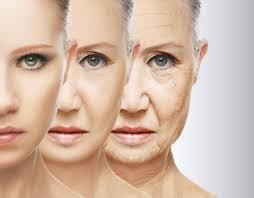Eating a well-planned, nutritious and balance mix of foods every day is a necessity to age properly. It has been proven to reduce the risk of heart disease, stroke, type 2 diabetes, bone loss, some kinds of cancer, and anaemia. Healthy eating may also help you reduce high blood pressure, lower high cholesterol, and manage diabetes.
Eating well gives you the nutrients needed to keep your muscles, bones, organs, and other parts of your body healthy throughout your life. These nutrients include vitamins, minerals, protein, carbohydrates, fats, and water.
Our body changes with aging because changes occur in all parts of the body starting from the smallest constituent of our body, namely the cell.
Body Organs and Cells
Body Cells age and their function also get reduced. Old cells die and get replaced by new cells and in some case as we age they don’t get replaced as part of the normal body processes.
Body organs also become old as we age, as the nos of cells in them reduces and thereby reducing their ability to function. Most internal functions also decline with aging. Most bodily functions peak shortly before age 30 and then the gradual but continuous decline begins. With this decline also, most functions remain adequate because most organs are capable of doing more than the functional capacity that the body needs For example, if half the liver is destroyed, the remaining tissue is more than enough to maintain normal function. Thus, disorders, rather than normal aging, usually account for most of the loss of function in old age. The number of cells in the testes, ovaries, liver, and kidneys decreases as the body ages. When the number of cells becomes too low, an organ cannot function normally. Thus, most organs function less well as people age.
Joints and Bones
Bones tend to become weaker (less dense) and more susceptible to breaking.
In women, bone density reduction increases after menopause as oestrogen production reduces by the body. Oestrogen is a hormone which helps in protecting bone breakdown during the normal processes of bone resorption.
Bones become fragile and weak partly because they contain less calcium (which gives bones strength). Calcium reduces as the body absorbs less calcium from foods. Vitamin D, which helps the body use calcium, also reduces.
Some bones weaken more than others. Most affected are end of the thighbone (femur) at the hip, the ends of the arm bones (radius and ulna) at the wrist, and the bones of the spine (vertebrae).
Cartilage in the joints gets thinner due to wear and tear of years of movement. The surfaces of a joint have reduced ability to slide over each other as they used to, and the joint is more susceptible to injury. Damage to the cartilage due to lifelong use of joints or repeated injury often leads to osteoarthritis, which is one of the most common disorders of later life.
Ligaments, which bind joints together, and tendons, which bind muscle to bone, tend to become less elastic, making joints feel tight or stiff. The tissues also weaken. Hence most people become less flexible. Ligaments tend to tear more easily, and when they tear, they heal more slowly. These changes occur because the cells that maintain ligaments and tendons become less active.
Muscles and Body Fat
The amount of muscle tissue (muscle mass) and muscle strength starts to decrease beginning around age 30 and continues throughout life. Some of the decrease happens due to reduction in growth hormone and testosterone, which drive muscle development.
Muscles cannot contract as quickly as more fast-contracting (fast-twitch) muscle fibers are lost than slow-contracting (slow-twitch) muscle fibers. However, aging’s effects reduce muscle mass and strength by no more than about 10 to 15% during an adult’s lifetime. More severe muscle loss i-which is loss of flesh) results from disease or extreme inactivity, not from aging alone.
Most older people retain enough muscle mass and strength for all necessary tasks. Many older people remain strong athletes. They compete in sports and enjoy vigorous physical activity. However, even the fittest notice some decline as they age.
Physical activity throughout is so important to be able to live when we age. Its not a great feeling if we will be inactive when we age.



